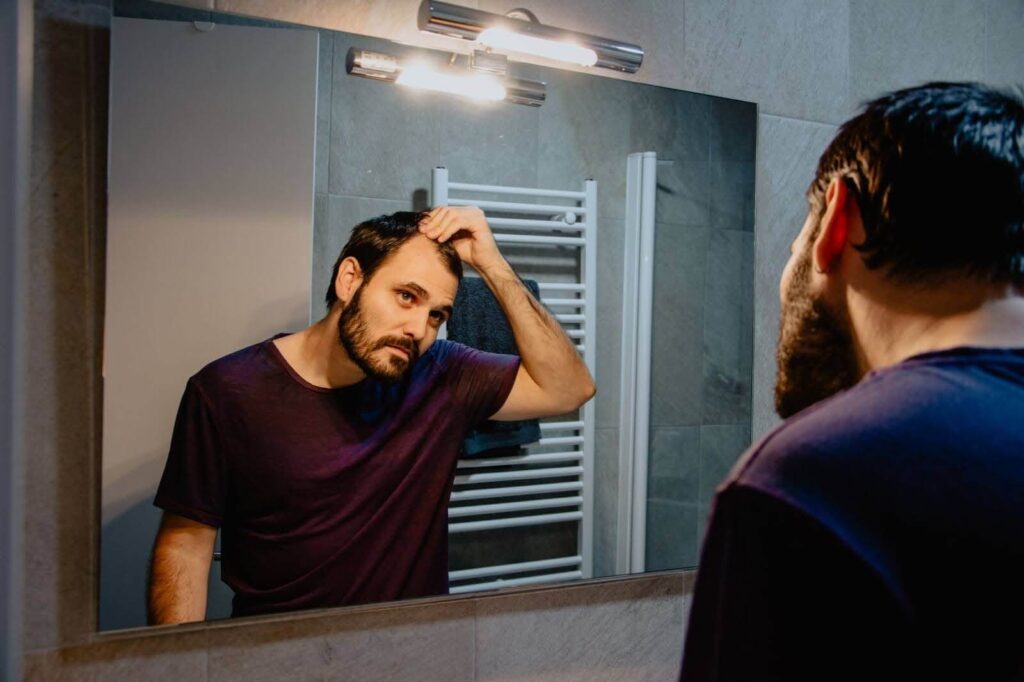FUE (Follicular Unit Extraction) hair transplants are minimally-invasive procedures that are easy to recover from. That’s because they do not require any sutures or stitches, meaning there isn’t much that needs to heal. But it’s still important to closely follow the right after-care routine to ensure the best success rate for your transplanted hair. Our team at Nashville Hair Doctor wants to make sure that you have all the information you need for your recovery.
During a typical FUE procedure, the technician extracts the hair in “follicular units” or grafts, which means groupings of 1-4 hair follicles, from the donor area. He or she then creates tiny punctures all over the recipient area in which the follicles are inserted. Over the course of 7-10 days post-op, the punctures in both the donor and recipient areas of the scalp scab over and heal.
Most patients return to their regular activities within 1-2 days of their procedure. Some patients take a week off from work to give their hair a chance to look normal again, but it’s not required from a medical standpoint.
While the recovery is already easy, there are some things you can do to make it even easier.
How to Sleep After a Hair Transplant
Keep Your Head Elevated
One consequence of any surgical procedure, even if it’s minimally-invasive, is swelling. Swelling after a hair transplant is common and nothing to be alarmed about. It typically only lasts a few days, and for some patients it may be very minor.
The more you can keep the swelling at bay, the faster you will be comfortable showing yourself in public. How you sleep for the first 7 days after your hair transplant determines how much swelling you will experience.
“Sleeping in a recliner is my #1 recommendation,”
says Shauna, the Nashville Hair Doctor’s NeoGraft consultant. Keeping your head slightly elevated keeps swelling on your scalp and forehead to a minimum. Swelling typically peaks on days two and three and then subsides. But Shauna likes to recommend the recliner for the first 7 days just to be safe.
Refrain from Tossing and Turning
There is another benefit to sleeping in a recliner. It typically keeps you from tossing and turning, or from rubbing your hairline against the pillows. You want to essentially avoid anything during the first few days that could disturb the new grafts from taking a firm hold in your scalp.
As long as you can keep from turning onto your stomach or side, you will be fine. If you don’t have a recliner and don’t know anyone else you could borrow one from, it’s not a big problem. Your sofa is not a bad option either. You can keep your head elevated by sleeping with a pillow on the arm rest of the couch. This will keep your head elevated and prevent you from turning over.
It’s not necessary to put anything on your head while sleeping. In fact, you are advised not to wear anything on your head for at least 3 days while the scabs solidify. Even if you apply ice – which is recommended if you experience swelling – you should not apply it directly the the area of newly transplanted hair. You basically try to avoid touching your hair with anything, period.
Other Hair Transplant Aftercare Tips
How you wash your hair after a hair transplant is very important as well. The best tip is to simply avoid washing your hair for a few days altogether. When you do recommence with washing, please follow our hair washing guidelines.
Keeping your body well-hydrated is another important aftercare regimen. Drinking lots of water is a good idea any day of the year, but it’s especially beneficial for a faster recovery. You also want to refrain from alcohol for a few days post-op, since alcohol intake can interfere with the blood supply to your head and scalp.
There are also some restrictions on exposure to sunlight as well as heavy exercise in the days following your hair restoration procedure. To make sure you follow all the rules, please read our list of DOs and DON’Ts after a Hair Transplant.
Once again, your recovery after a hair transplant is neither painful nor long. As long as you make sure you follow your surgeon’s guidelines, you will ensure a fast return to “normal.” The hardest part about your post-op experience may well be remaining patient while you wait for your hair to grow!
Ready to see if you’re a candidate for a hair transplant? Simply request a free quote and upload your pictures, and our consultant will prepare a quote for you.
For more information, contact Nashville Hair Doctor.

